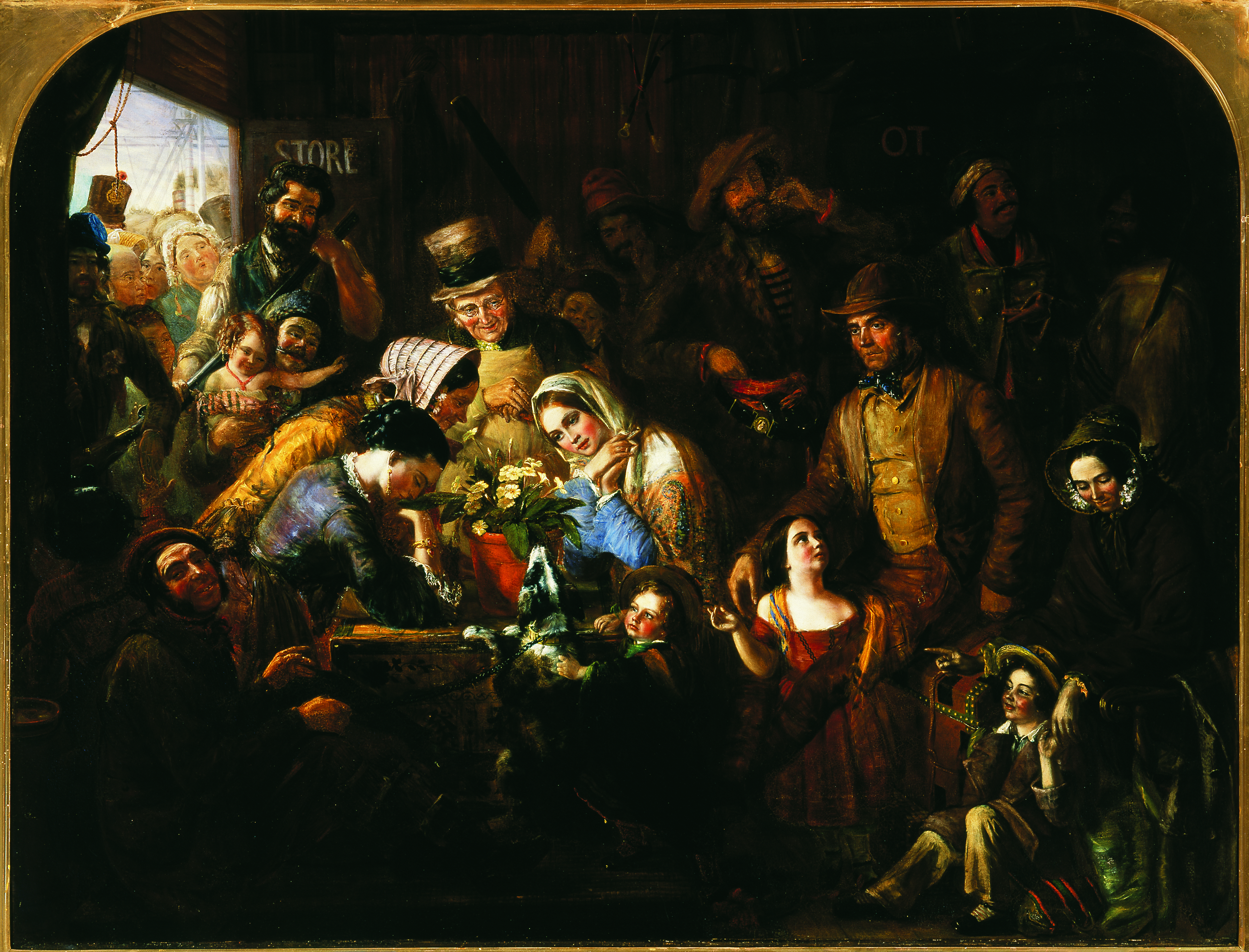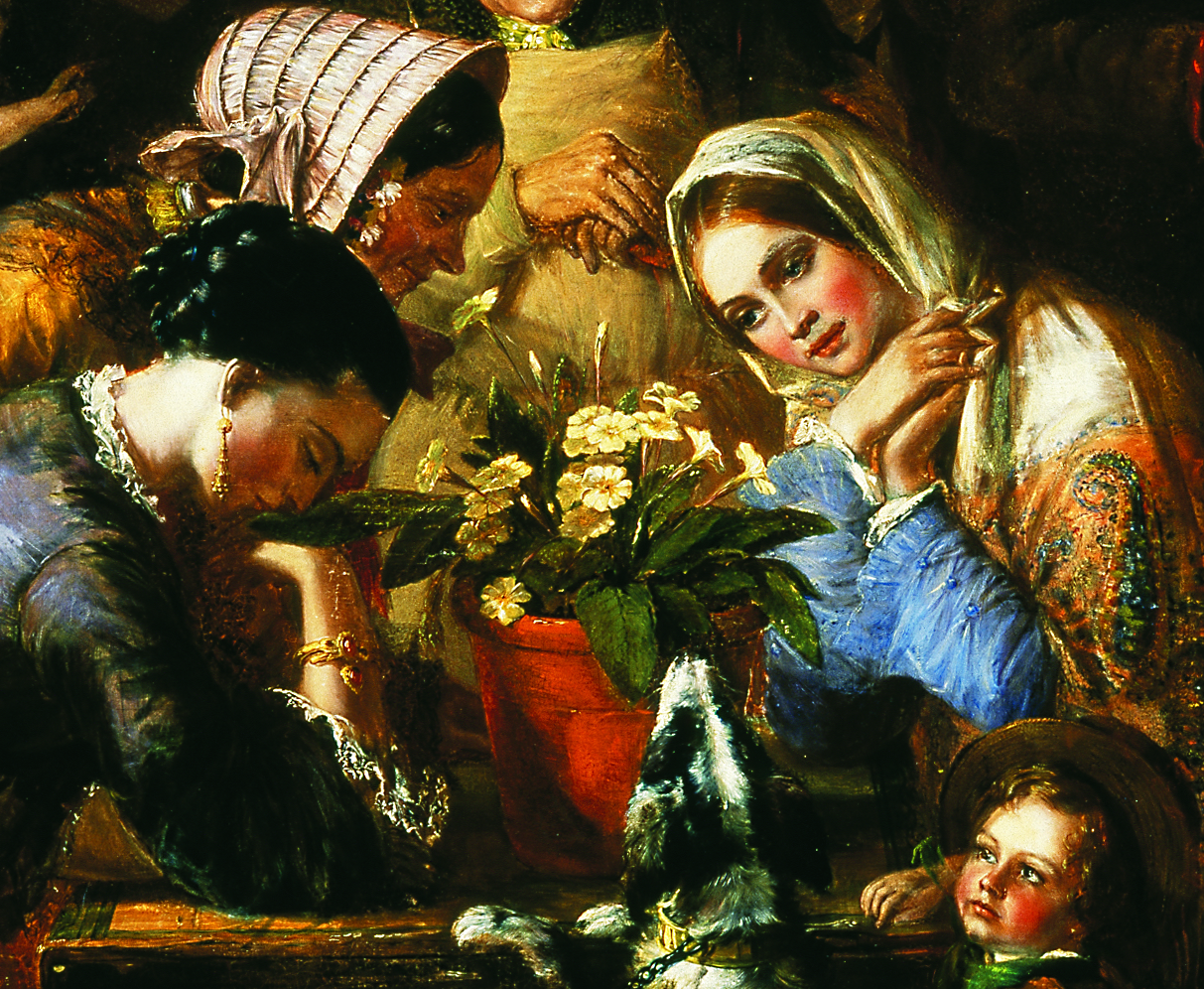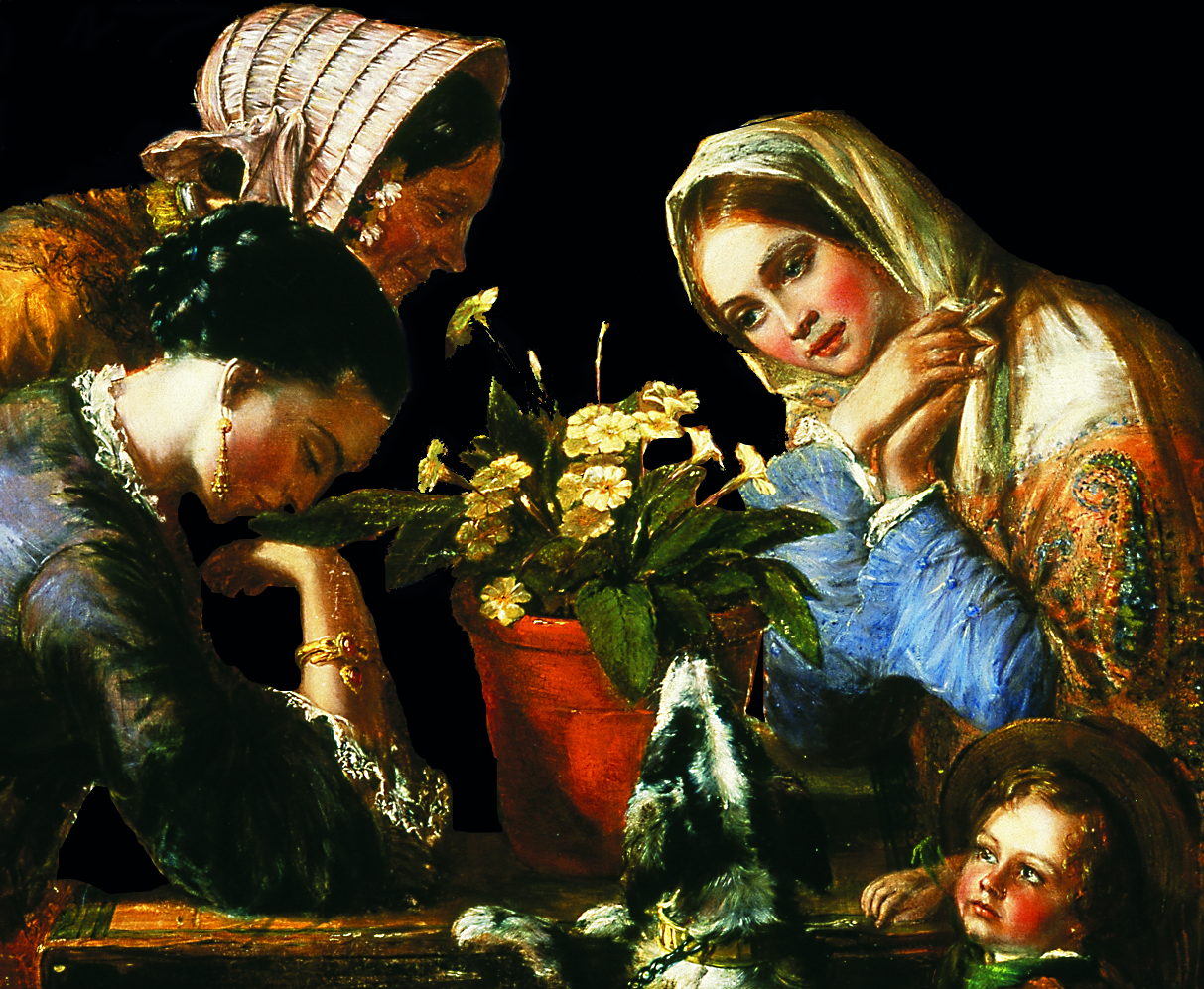Skip to: Object detail; Visual description; Context; Interpretation; About the artist; Soundscape; Next artwork
Object Detail
Title: A Primrose from England
Artist: Edward Hopley
Date: circa 1855
Object type: painting
Medium: oil on canvas
Size: 151 by 201 cm
Location: Gallery 14 (the last gallery on the left when walking straight from the entry foyer)
Visual description
The painting depicts a group of almost forty people crowded around a potted flowering primrose plant on a table inside a ship’s storeroom. The people are dressed in colonial wear and the ship is at dock.
Light floods in through an open door to the left and focuses attention on the primrose and a group of three women who surround it. The central woman in the light wears a blue dress and has a white veil over her hair, posed in a manner reminiscent of the Virgin Mary. Around her and also in the light are women, children, family men, traders and a small dog. On the left side in the shadows there are petty criminals and ex-convicts. To the right are another group of men: a sailor, a buccaneer, and in the depth of the shadows a figure in a turban who represents the non-European, non-Christian subjects of the Empire. To his right stands an indigenous Aboriginal Australian.
The painting has curved edges at the top, giving the overall shape of a dome such as that which was used to transport the primrose.
Context
Historical and cultural context
When “A Primrose from England” was exhibited at the Royal Academy in 1855, it was accompanied by a catalogue note which described the inspiration for the work:
“Dr Ward had announced to the Royal Institution that a primrose had been taken to Australia in a covered glass and when it arrived there in full bloom the sensation it excited as a reminiscence of the ‘fatherland’ was so great that it was necessary to protect it by a guard”.
Dr Ward invented the ‘Wardian Glass’ in 1833 and it revolutionized the transportation of plant specimens throughout the British Empire. The glass case enabled the primrose to survive the journey to Australia with a minimum of watering.
An engraving of the painting was published in the Illustrated London News on 16 October 1858 along with the following story:
Two or three years ago it was reported in a newspaper of Melbourne, Australia, that an English primrose had been imported in a wardian-case, and would be brought on shore from a ship in the harbour, to be exhibited in the city. The announcement excited a great sensation. Upwards of three thousand people turned out into the streets to see the gentle stranger brought ashore, and the pressure of the crowd was so great that it was found necessary to call out the police to preserve order, and to make a line, through which the primrose might be escorted on shore, to be seen by all her admirers
The inclusion of an indigenous Aboriginal Australian in the painting is typical of colonialist images of the time which depicted First Nations people as willing participants in the dismantling of their culture.
Ownership of the painting
A crate, included at upper right in the painting, is stamped ‘Patent goldwasher’ and carries a label, “E Hopley for T W Kennard”. Thomas William Kennard (1825–1893) was the original owner of the oil painting. Hopley already knew Kennard, a wealthy British engineer, as he had painted his wife in 1854.
In 1964, the painting was gifted to Bendigo Art Gallery by Mr and Mrs Leonard Lansell. The Lansell family were among Bendigo’s most successful mining entrepreneurs.
Materials
Tar was used in the paints and has caused the painting to darken over time. It has also caused some sections of the painting surface to bubble.
Interpretation
The transportation of the flower acts as a metaphor for the principle theme of the painting, that of immigration and colonization. During the 1850s the colonial administrators were concerned, for ideological reasons, to encourage middle-class immigration. In particular, single, respectable women were encouraged to migrate. Beneath the obvious theme of a nostalgia for home, Hopley’s picture reflects many of these mid-Victorian assumptions about race, society and the role of women.
The light divides the painting into two groups. Those who embody the correct ideological qualities stand in the light, while those who are less desirable or from Australia’s past stand in the shadows and around the edges.
Hopley seems to have been inspired by nativity scenes in which the Christ child (or in this case, the Primrose), is illuminated and central to the composition, being adored by the various characters drawn to him.
About the artist
Edward Hopley was born in 1816 and died in 1869. He lived most of his life in Lewes, Sussex. Hopley had a relatively successful mainstream career as a painter specializing in topical genre scenes, fairy paintings, and portraits. He exhibited regularly in London at both the British Institution from 1845 and the Royal Academy from 1851.
In his day, Hopley’s work tended to receive greater popular approval than critical recognition. His images have gained greater prominence with the passing of time, as they have now come to be valued as fascinating social documents of an earlier age. Hopley was an artist keenly aware of the prevailing concerns of the nineteenth century, and his narrative paintings provide an insight into the Victorian mentality and way of life.
Soundscape
Sailing ship at sea.
Next artwork
Paintings: The Drover; The Golden Wedding.
Sculptures: Folly; Venus Tying her Sandal.



